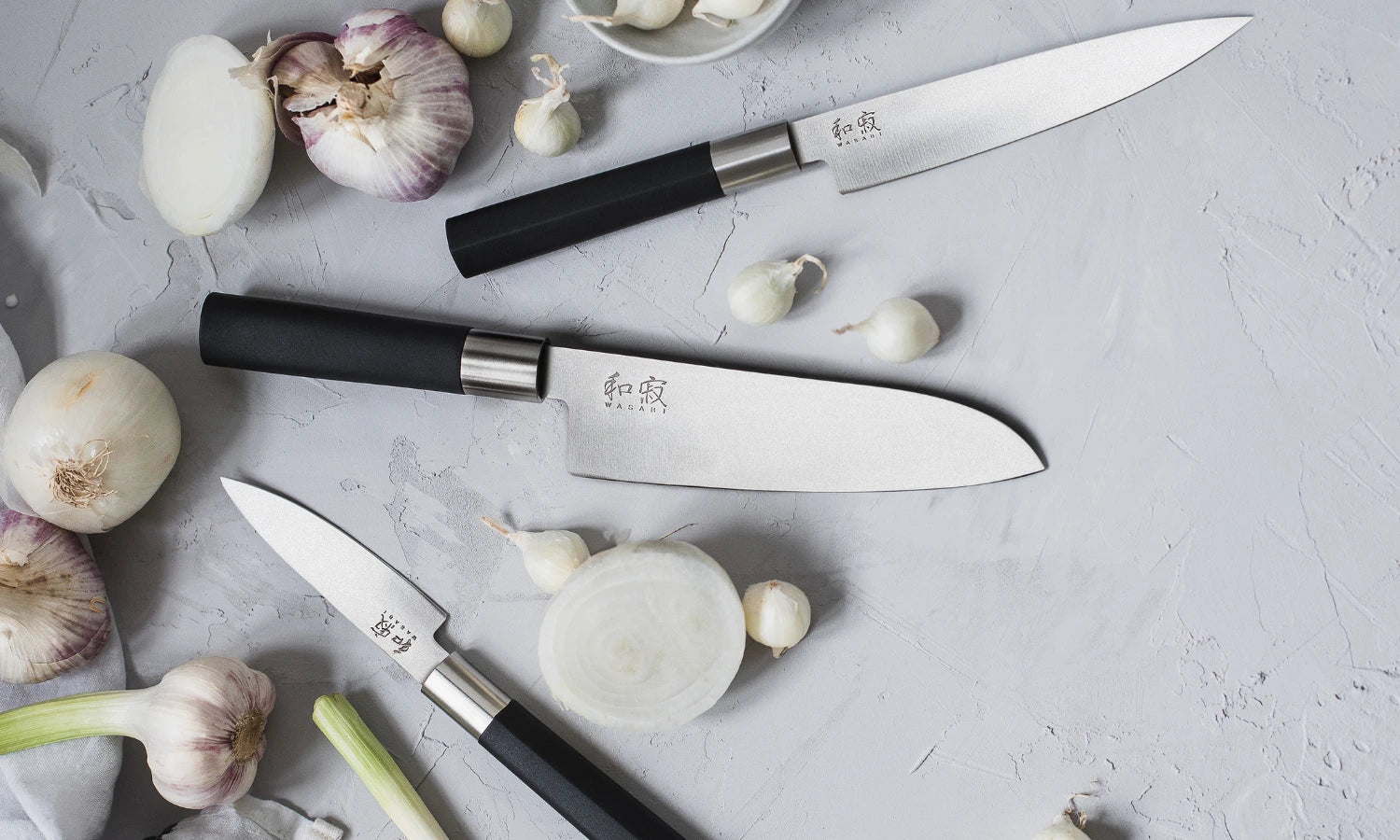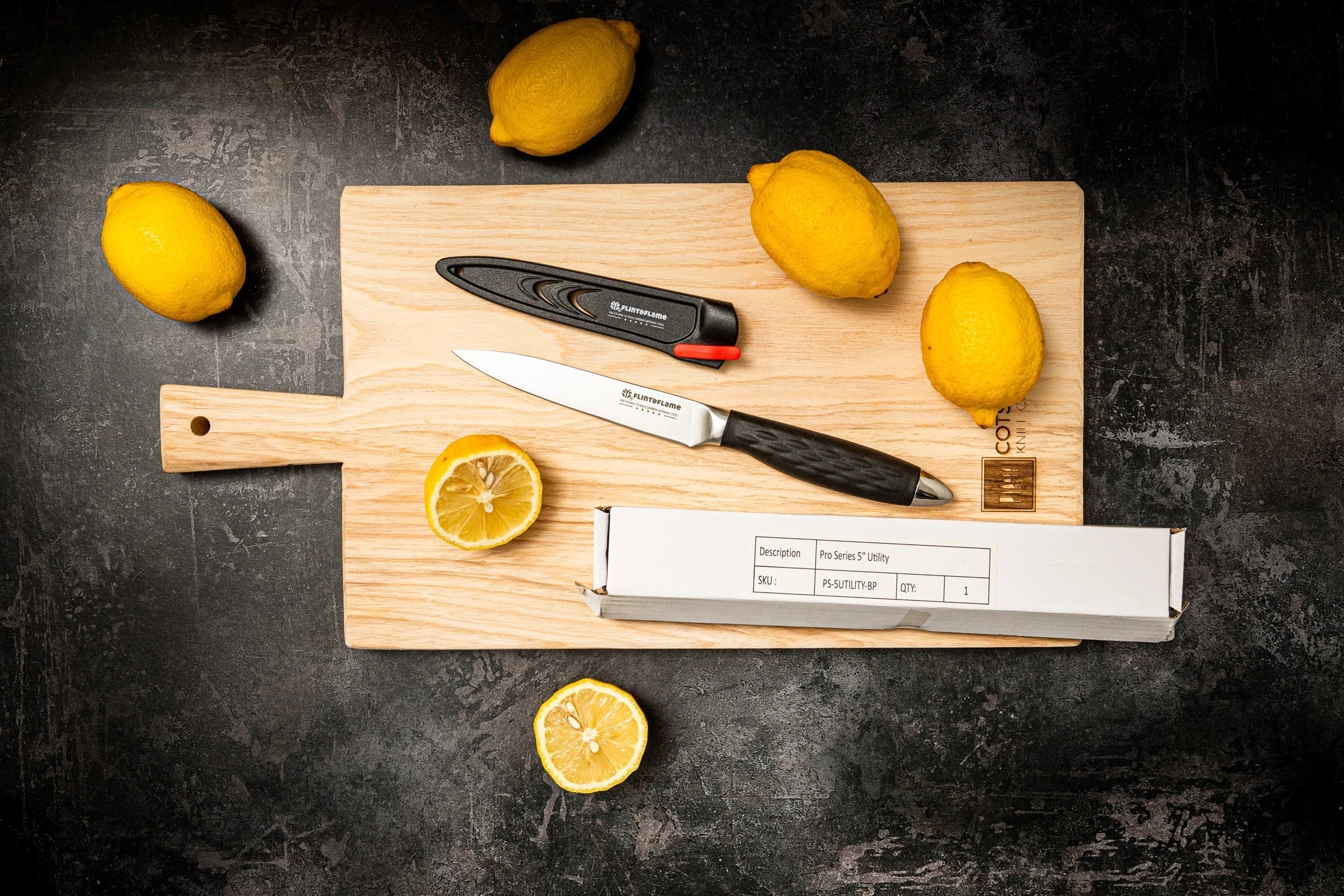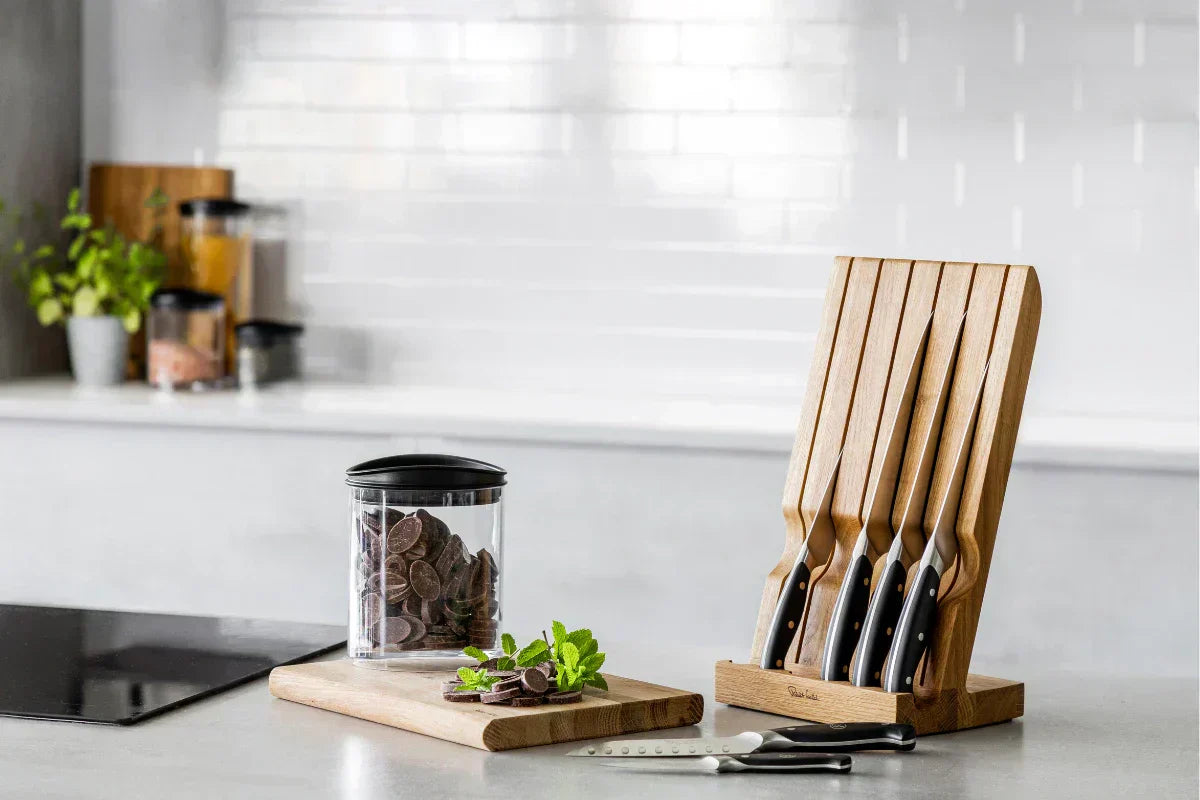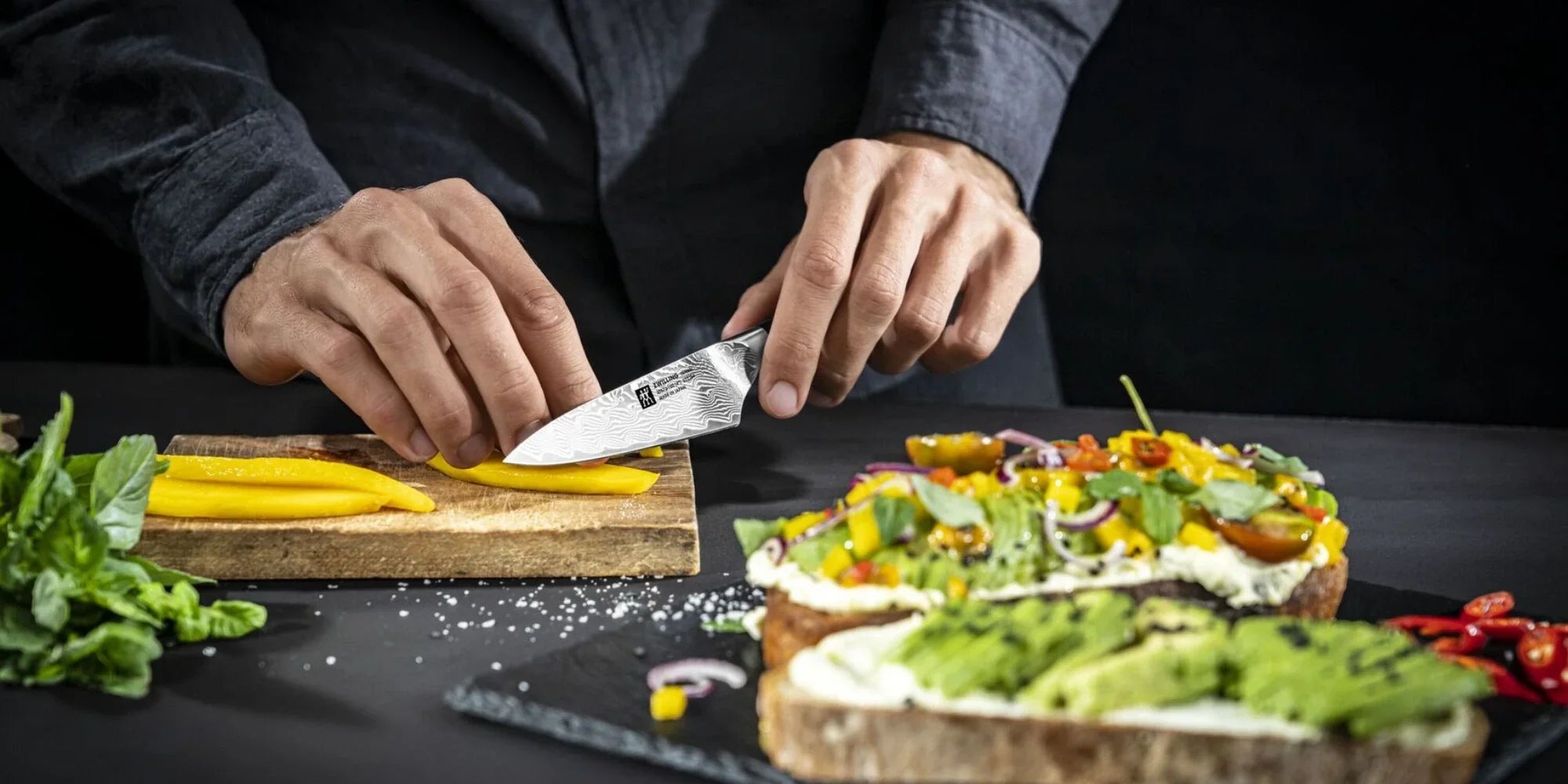What is a Single Bevel Blade?

A single-bevel knife, often called a chisel-edge knife, is ground on only one side of the blade while the opposite side stays flat or slightly concave. This creates a very acute cutting angle, usually between ten and fifteen degrees, which is ideal for ultra-precise work. Classic Japanese blades often use a single bevel for controlled, paper-thin slicing.
Benefits of Using a Single-Bevel Edge
- Razor-sharp precision for delicate cuts
- Reduced drag because food releases easily from the flat side
- Steering control that lets chefs create perfectly straight or intentionally curved cuts
- Quick daily touch-ups, as only one side needs honing
Single-Bevel vs Double-Bevel Knives
Single-bevel knives are ground only on one face, leaving the reverse side flat or slightly concave. That asymmetry gives the blade a true chisel profile: it slices with extraordinary precision yet naturally “steers” toward the flat face, a feature sushi chefs exploit for perfect sashimi slices. Because the bevel is so narrow, often ten to fifteen degrees, the edge is extremely keen and sharper than the traditional double bevel blades, but the steel behind it is also thicker to support delicate cuts without flexing. This geometry means single-bevel blades favour push-cutting and draw-slicing techniques rather than rocking on a board, and they are traditionally offered in right or left-handed versions to keep the flat side against the food.
Double-bevel knives are ground on both sides, usually at fifteen to twenty degrees per face, producing a symmetrical V profile. The edge is fractionally less acute but more durable, so it tolerates rougher board contact and varied cutting motions like rocking, chopping and draw cuts. Maintenance differs as well: a single-bevel knife asks you to sharpen only one face then deburr the flat side, whereas a double-bevel edge must be kept even on both sides to stay centred. In practice single-bevel excels at specialist tasks that reward absolute control and mirror-smooth surfaces, while double-bevel knives remain the versatile workhorses of everyday Western and fusion kitchens.

Are Single-Bevel Knives Hard to Sharpen?
They require a different technique, but they are not harder once you learn it. Only the bevelled face is ground, so you have less metal to remove. The key is keeping the original angle steady and gently wiping the burr from the flat side without creating a second bevel. With a little practice most cooks can sharpen a single-bevel knife confidently.
Guide on How to Sharpen a Single-Bevel Blade
- Select stones: coarse eight-hundred to one-thousand grit for repairs, two to three thousand for regular sharpening, six-thousand plus for polishing.
- Prepare the stone: soak water stones for ten minutes or keep them wet with a splash of water.
- Set the angle: place the bevel against the stone at its factory angle, roughly ten to fifteen degrees.
- Grind the bevel: push and pull the blade along the stone, covering the full edge until a uniform burr forms on the flat side.
- Remove the burr: lay the flat side perfectly flush to the stone and take two or three light strokes.
- Refine: repeat the process on medium and fine stones until you are happy with the sharp edge
- Test and clean: slice paper or a ripe tomato to confirm sharpness, then rinse and dry the knife before using with food you are prepping to eat due to any shavings from the blade.
Our Take: Why Keep Both Styles in the Kitchen
A double-bevel chef’s knife handles most everyday prep with ease, from dicing onions to slicing meat, and its symmetrical edge is more forgiving requiring less maintenance. A single-bevel knife adds something special: an ultra-sharp, chisel-like edge that excels at precision work: think flawless sashimi, wafer-thin vegetable sheets or delicate garnish cuts. Pairing a dependable double bevel for general tasks with a single bevel for moments when you want the sharpest blade possible gives your kitchen the best of both worlds.




